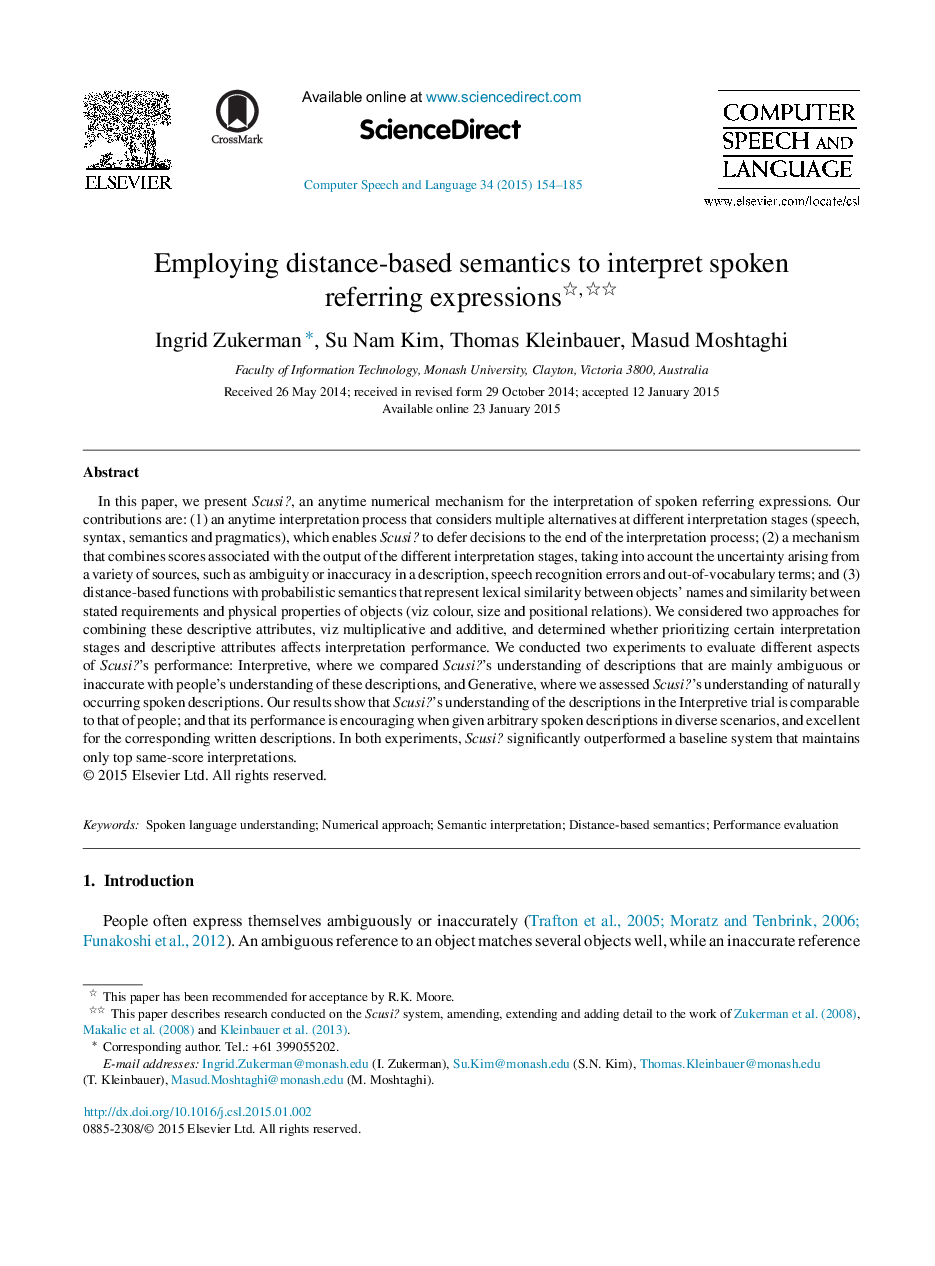| Article ID | Journal | Published Year | Pages | File Type |
|---|---|---|---|---|
| 559002 | Computer Speech & Language | 2015 | 32 Pages |
•An interpretation process that considers multiple alternatives.•A mechanism for combining uncertainty from a variety of sources.•Distance functions with probabilistic semantics that represent similarity measures.•Two evaluation experiments to assess our system's performance.
In this paper, we present Scusi?, an anytime numerical mechanism for the interpretation of spoken referring expressions. Our contributions are: (1) an anytime interpretation process that considers multiple alternatives at different interpretation stages (speech, syntax, semantics and pragmatics), which enables Scusi? to defer decisions to the end of the interpretation process; (2) a mechanism that combines scores associated with the output of the different interpretation stages, taking into account the uncertainty arising from a variety of sources, such as ambiguity or inaccuracy in a description, speech recognition errors and out-of-vocabulary terms; and (3) distance-based functions with probabilistic semantics that represent lexical similarity between objects’ names and similarity between stated requirements and physical properties of objects (viz colour, size and positional relations). We considered two approaches for combining these descriptive attributes, viz multiplicative and additive, and determined whether prioritizing certain interpretation stages and descriptive attributes affects interpretation performance. We conducted two experiments to evaluate different aspects of Scusi?'s performance: Interpretive, where we compared Scusi?'s understanding of descriptions that are mainly ambiguous or inaccurate with people's understanding of these descriptions, and Generative, where we assessed Scusi?'s understanding of naturally occurring spoken descriptions. Our results show that Scusi?'s understanding of the descriptions in the Interpretive trial is comparable to that of people; and that its performance is encouraging when given arbitrary spoken descriptions in diverse scenarios, and excellent for the corresponding written descriptions. In both experiments, Scusi? significantly outperformed a baseline system that maintains only top same-score interpretations.
